Qatar: For 2022 and beyond
Qatar gears up for tomorrow. The emirate on the east cost of the Arabian
Peninsula is working intensively on its future. Also with its MICE business.
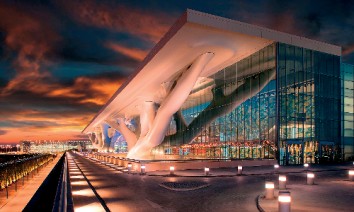
Qatar’s rapid pace of development is now visible almost everywhere. Doha boasts many – often spectacular – skyscrapers, but cranes and building materials are also a common sight. Over the next decade the government plans to spend around 150 billion euros on infrastructure. An investment that will ultimately benefit tourism. The average number of foreign visitors to the emirate was recently three million. Qatar’s attractions include wonders of nature such as the desert dunes by the sea and Doha’s new Katara Cultural Village. By 2023, the first year after the World Cup, the number of international guests is expected to rise to 5.6 million. Qatar Tourism Authority (QTA) is aiming for seven million foreign visitors in 2030. Recently, the country waived its entry visa requirements for many countries.
In the wake of these developments, the MICE sector – which currently accounts for half of all tourists – is set to grow even further. Over 120 regular trade fairs and conferences are already being held in Qatar, and this figure is expected to rise strongly before long. QTA follows a twin-track approach. Its activities are not just geared to attracting more events but also to educating MICE professionals. Once acquired, their know-how will enhance Qatar’s quality as an event destination and, in turn, increase its appeal for potential customers. In early October, 14 Qatari business events professionals received the UFI’s International Event Management Degree.
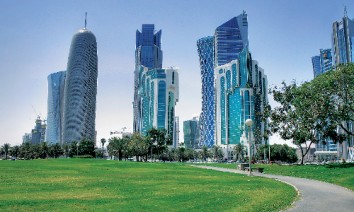
The main MICE venues in Qatar are hotels plus, above all, two large event centres. Doha Exhibition and Convention Centre (DECC), centrally located in the West Bay business district, was designed by world-renowned architect Helmut Jahn and has been operating for two years. 29,000 square metres of column-free exhibition space are available, which can be used as a whole or partitioned into up to five halls. The venue boasts a ceiling height of 18 metres from floor to ceiling. Several well-known organisers such as DMG and IFP already use the DECC for events. The international airport is just a 20-minute drive away, and shopping malls and ten hotels are within walking distance. A metro connection is currently under construction.
The current embargo by some of Qatar’s neighbours has affected activities at the DECC in different ways. For one part, trade fairs have shrunk due to the absence of exhibitors from these countries, observes Director of Sales and Marketing Florent Joncquiert. For the other, the current situation has led to greater cohesion in the emirate and made it focus on its own strengths. Attempts are being made to find vacant niches. Early October saw the launch of "Made at Home" where Qatari businesses – especially women – showcased domestically produced items. The event met with such a good response that the organisers want the next edition to be two days longer. Florent Joncquiert is delighted by this success and also dreams of an “art fair like Art Cologne”.
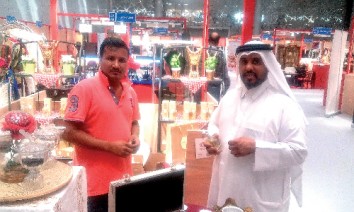
Qatar National Convention Centre (QNCC) is Doha’s other MICE hotspot. It was built on the initiative of the Qatar Foundation and opened its gates in December 2011. The meetings and conventions held there largely serve the foundation's objectives in three fields: education, science and social development. QNCC is situated on the gigantic campus of the Qatar Foundation: alongside Qatar Science and Technology Park, Sidra Medical and Research Centre, and renowned international universities. This proximity generates synergies. 39,000 square metres of flexible exhibition space in up to nine halls and 52 conference rooms are available at QNCC. The largest hall has capacities for 4,000 delegates. Its glass façade with a length of 250 metres is adorned with two sidra tree sculptures. The sidra tree is the iconic symbol of Qatar’s heritage and once helped wanderers in the desert find their bearings.
Opened in 1982, the pyramid-shaped Sheraton Hotel is a pioneer of the emirate’s MICE sector. It was the first (of now 40) five-star hotels in Qatar and has since then hosted major conferences - including various meetings of the Gulf Cooperation Council. Many of its 371 rooms offer stunning views of the ocean and skyline. The Sheraton boasts a huge ballroom and meeting rooms, as does the Westin Doha Hotel. Its ballroom is also a popular wedding venue. As in other hotels, its restaurants stand out for their excellent international cuisine. The Grand Hyatt with its turrets looks like a little palace. Located on the shoreline of the West Bay Lagoon it even has its own park and private beach. And you can even rent one of 91 villas that round off the range of accommodation. 300 metres tall, the Torch Doha is another iconic landmark and the capital’s highest building. It is located in the heart of Doha’s sports complex, the Aspire Zone, where health and fitness play a major role. Football clubs like Real Madrid, Manchester United, PSG and Schalke have already made use of its facilities (www.visitqatar.qa).
Author: Peter Borstel
This article was published in TFI issue 4/2017
Share in Facebook, Twitter or Google+:
TFI - Trade Fairs International - The International Trade Fair Magazine.
© 2006 - 2024 by TFI-Verlagsgesellschaft mbH. All rights reserved. TFI-Verlagsgesellschaft mbH shall accept no responsibility for the contents of external links and other contents.
TFI-Know-how
-
What to do when things go wrong at virtual or in-person events?

In the event world, it’s simply part of life if things don’t work out as planned.
-
How can networking be made to work at online events?

Networking typically happens at real, in-person events. But it’s also possible to do it online; it just works a little differently. There are various options available to organisers.
-
How can exhibitors stand out at trade fairs?
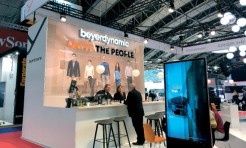
New products and a well-conceived stand design are not the only drivers for a successful presence. Many other factors are also important, but trade fair planners often lose sight of them.
-
How can industry decision-makers be reached online?
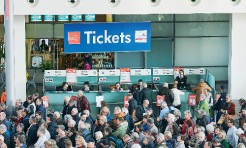
Trade fairs and trade fair companies need to constantly further develop, become more agile and flexible and offer services all year round. New, digital offerings are very important here. With its TrustedTargeting technology, Messe München offers its customers access to leading business-to-business decision-makers on the Internet.


